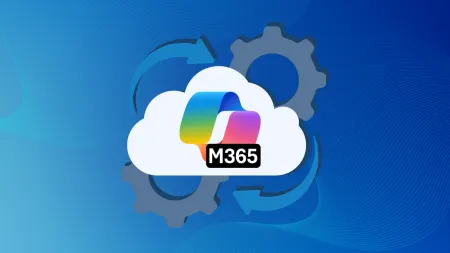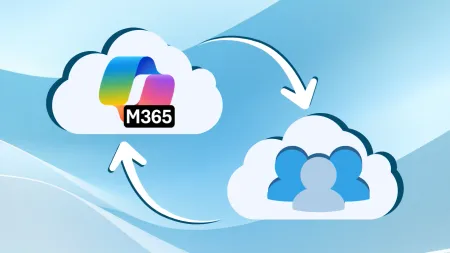Azure Migration Made Easy: Tools, Automation, and Best Practices for a Smooth Cloud Transition
Simplify your Azure migration with the right tools and automation. Explore Azure Migrate, Site Recovery, DevOps, and third-party solutions for an efficient cloud transition.

In recent years, organizations have increasingly moved their operations to the cloud. This isn’t surprising given that utilizing the cloud can allow businesses to access computing resources on demand, paying only for what they need, as they need it. This gives them the ability to scale their operations as needed to meet demand much easier, and more affordably, than if they had to invest in physical hardware. Moving to the cloud can then reduce costs, enhance flexibility, improve collaboration, and increase data security, making it an attractive option for many organizations.
If you’re considering migrating to the cloud and your business already operates in a Microsoft environment, then you may want to consider migrating to Microsoft Azure. Azure is a popular cloud computing platform that offers a wide range of services, including computing, storage, networking, and collaboration tools. Yet, as you explore Azure, you’ll quickly discover that moving to the cloud is no simple task, as this involves moving data, applications, and IT processes from an on-site data center or another cloud service to Azure. Successfully migrating to Azure will require the right tools, planning, and implementation to ensure this process goes as smoothly as possible. To help you start your cloud migration journey, keep reading as we explore the tools you’ll need to facilitate an Azure migration and the steps you can take to streamline this process.
What is Azure Migrate
One of the most important tools you’ll have at your disposal is Azure Migrate. This is one of Azure’s built-in migration tools, and it serves as a central hub for companies during their cloud migration. It offers many essential tools to streamline and simplify the process of moving workloads to Azure, including comprehensive discovery, assessment, and migration capabilities, as well as cost-estimation utilities and deployment recommendations. Simply, Azure Migrate provides a simplified migration, modernization, and optimization service for customers who are looking to migrate their workloads to Azure by helping them plan, execute, and track their migration, and the best part is it’s free for Azure customers.
Benefits of Using Azure Migrate
Azure Migrate is the most important tool to have during your migration, as it will act as a central hub for planning and managing your migration. Just a few of the biggest advantages of using Azure Migrate when moving workloads to the cloud include:
- Centralized Migration Management: Azure Migrate acts as a central hub from which you can plan and oversee the migration process. Being built into Azure makes this tool extremely useful as it can help simplify the migration management process. It also integrates with third-party tools, simplifying migration management and monitoring.
- Built-in Security and Compliance Support: Microsoft has worked hard to ensure that Azure provides robust security and compliance features to protect your data during and after your migration. The system can even help you identify and correct vulnerabilities before they cause security and compliance issues.
- Unified Integration With Microsoft Cloud Tools: Since Azure Migrate is Microsoft’s built-in migration tool, you can rest assured knowing that it will offer native integration with Microsoft cloud tools and applications. Unlike when working with third-party migration tools, you will never have to worry about how Azure Migrate will integrate with Microsoft systems.
- Cost Optimization: Using Azure Migrate can also help your organization discover, assess, and right-size its workloads. This can lead to significant cost savings during the migration process by optimizing your resource utilization.
- Enhanced Efficiency and Reduced Downtime: Azure Migrate offers unique tools and automation features that can help boost efficiency and accelerate the migration timeframe. Additionally, with Azure Migrate, you won’t have to worry about downtime cutting into productivity. This is because Azure Migrate supports phased migration, allowing you to plan your migration in a way that will reduce disruption.
Using Azure Site Recovery for Efficient migration
Another essential migration tool built into Azure is Azure Site Recovery. Azure Site Recovery (ASR) is a tool that enables business continuity by providing disaster recovery. It does this by replicating workloads to a secondary Azure location, which helps minimize downtime during an outage. However, while ASR was originally built as a disaster recovery tool, it can also be extremely valuable during an Azure migration by replicating on-premises workloads to Azure. It can then streamline the migration process by automating the process of moving workloads. ASR also provides support for hybrid environments, making it a good option for organizations with on-site and cloud-based workloads.
Third-Party Tools for Azure Cloud Migration
Of course, instead of just relying on Microsoft’s integrated Azure migration tools, you may also find it helpful to invest in some third-party tools as well, as some can provide faster migration speeds, cost savings, and they can make it easier to migrate large numbers of users. While there are countless third-party tools available, these three provide the best features to ensure a unified cloud migration:
- CloudEndure: CloudEndure is a useful cloud migration tool that enables organizations to migrate to Azure with minimal downtime. It provides a number of useful features to help ensure smooth migrations, including live migrations, automated failover, rollbacks, and continuous workload replication.
- Zerto: Zerto can be a powerful tool to employ if you plan on operating in a hybrid cloud environment, as it supports hybrid cloud disaster recovery and migration. Some of its key features include real-time replication, cross-hypervisor support, and automation. It also provides simplified management and near-zero downtime migrations.
- Carbonite Migrate: Another useful Azure cloud migration tool is Carbonite Migrate, as it provides automated and real-time data migration. It can help facilitate integrated migrations for businesses that may not have the knowledge or tools to do so alone while ensuring minimal downtime through continuous replication at scale.
Comparing Microsoft Native VS Third-Party Migration Tools
So, how will you know whether third-party migration tools or Azure’s native migration tools will work best for you? While Azure’s native tools, like Azure Migrate, offer robust capabilities, third-party tools can provide specialized features for complex scenarios. Choosing the right tools will be crucial for the success of your migration, so it’s imperative that you evaluate each tool’s strengths in areas like features, data transfer speeds, and integration with existing workflows to help you determine which tools will work best for you. You may also want to consider consulting a managed service provider (MSP) who can help you choose the best tools and ensure a smooth migration to Azure.
Best Practices for a Smooth Azure Migration
Once you choose the tools that you will use during your Azure Migration, you will want to plan out your migration to ensure it goes smoothly. Here are a few best practices to ensure a smooth Azure migration:
- Conduct a Pre-Migration Assessment: Your first step before starting an Azure migration is to conduct a thorough assessment. Evaluate your current infrastructure, identify roadblocks and compatibility issues, and create a detailed migration roadmap.
- Use Azure Site Recovery: As you start your migration, make sure that you use Azure Site Recovery to reduce downtime and ensure failover.
- Leverage Third-Party Tools: Incorporate third-party tools into your migration plan, as the right third-party tools can save time and money through automation.
- Automate Migration Processes: Speaking of automation, make sure to incorporate automation into the migration process, as automation tools can help reduce costs, minimize risks, and enable a faster, more efficient migration process.
- Monitor and Optimize Post-Migration: Once the migration is over, there is still more for you to do. Using Azure Monitor, it is important to track workload performance post-migration, as this can help you continually optimize resources to ensure efficiency.
Need Help Migrating to Azure? Contact Agile IT Today
While migrating to a Microsoft Azure cloud environment can seem like a daunting task, having the right tools at your disposal can streamline this process while improving efficiency and keeping costs down. In particular, Azure native tools like Azure Migrate and Azure Site Recovery will play a pivotal role in ensuring your migration goes smoothly.
Of course, if you’re feeling overwhelmed by the prospect of migrating to Azure, you don’t have to go through this process alone. Consider consulting an experienced managed service provider like Agile IT today to help you navigate the migration process.
Feel free to contact Agile IT to learn more about our Azure migration services, including how partnering with us can help ensure this transition goes as smoothly as possible.





